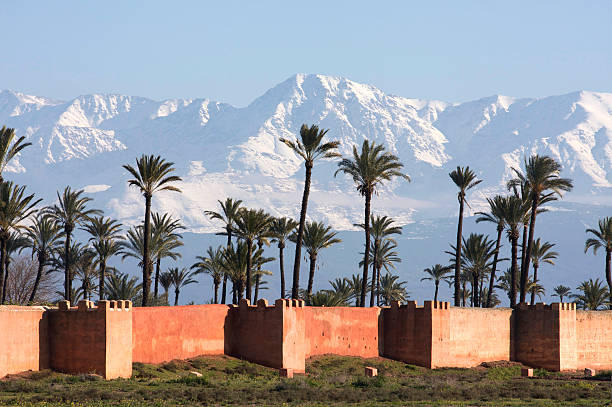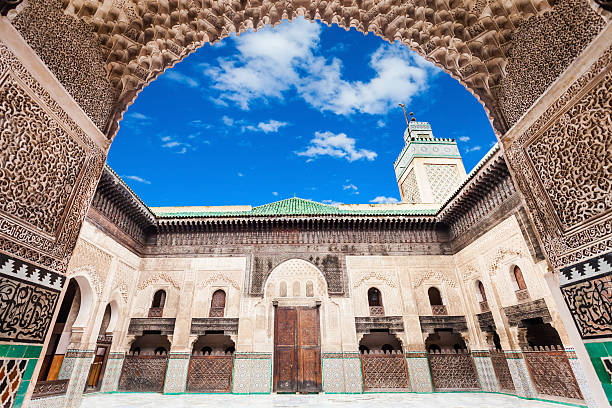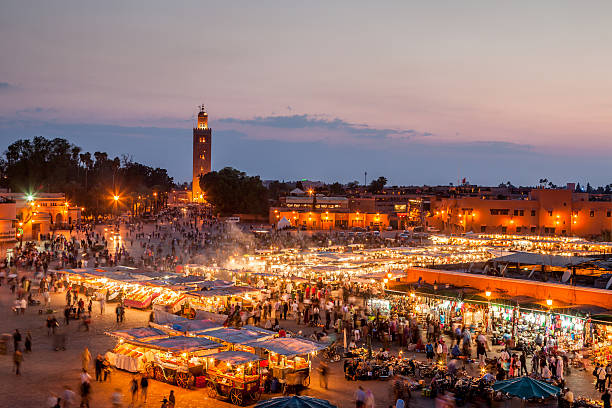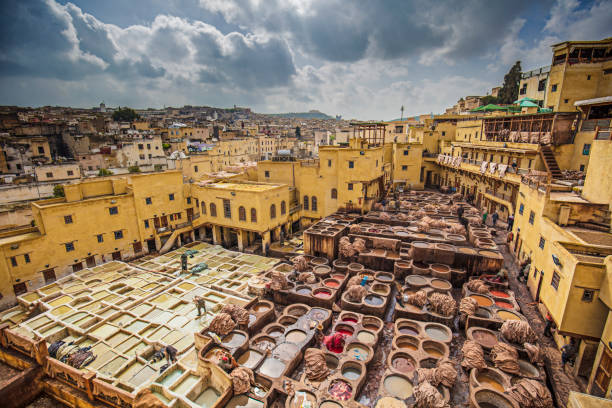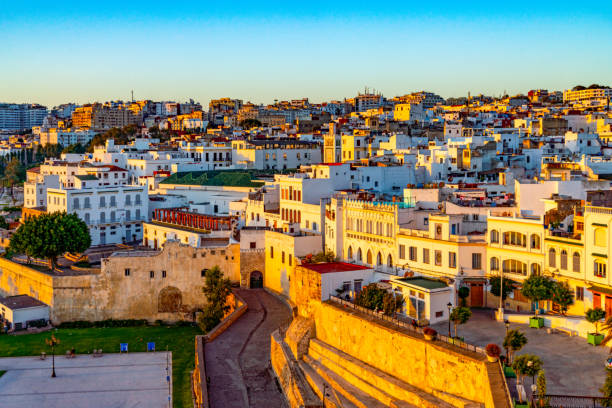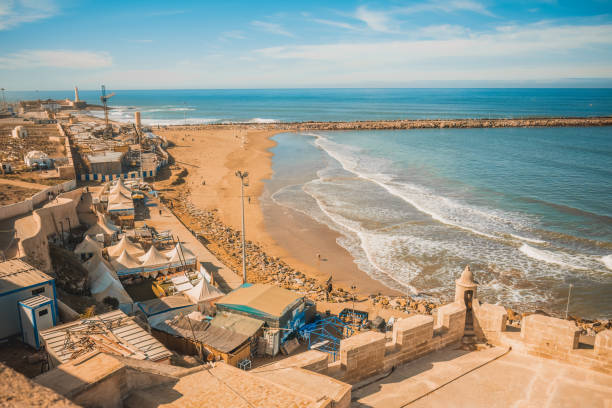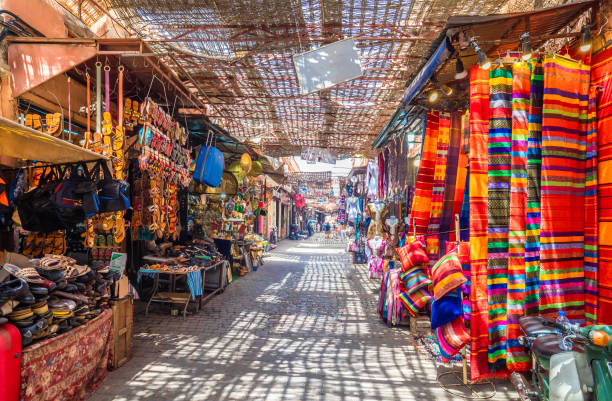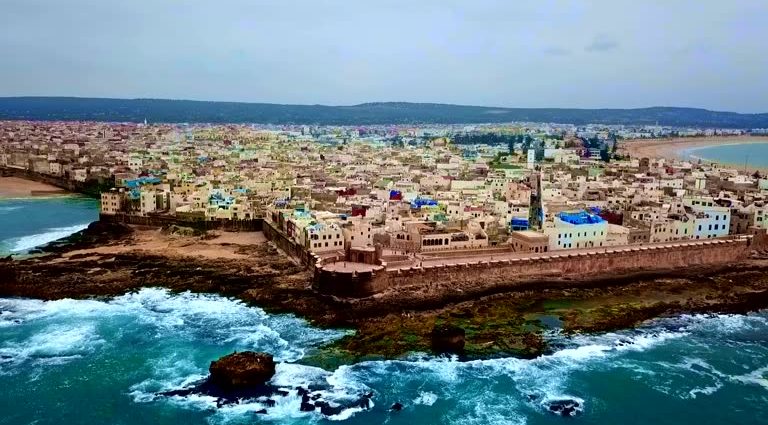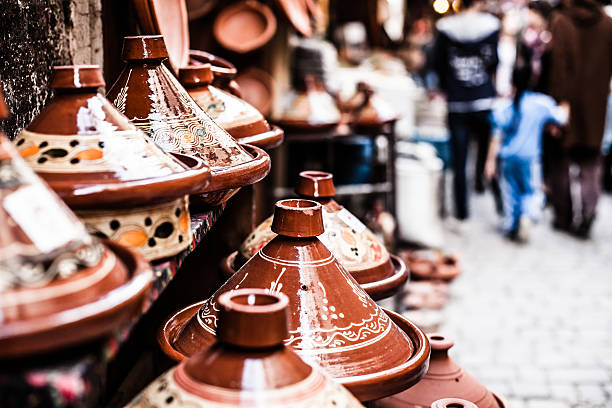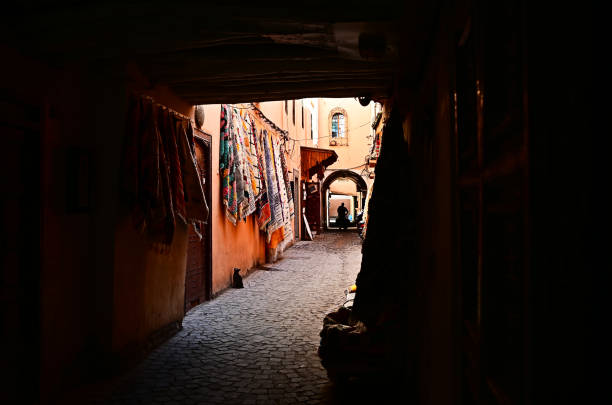Morocco often evokes images of scorching desert heat and sun-drenched medinas, leading many travelers to plan their visits during spring and fall. Yet those of us who know Morocco intimately hold a well-kept secret: winter transforms the kingdom into perhaps its most magical incarnation. From December through February, a special alchemy occurs as temperatures moderate, crowds thin, and the country reveals aspects of its beauty and culture often missed in warmer months. At Kasbah Transfers, our years guiding travelers through Morocco’s winter landscapes have shown us that this “off-season” actually offers some of the year’s most rewarding experiences. Today, we share why winter in Morocco deserves serious consideration for your next journey.
The Climate Advantage: Perfect Temperatures in Key Destinations
Marrakech and Southern Cities: Ideal Exploration Weather
While summer sends temperatures soaring above 40°C (104°F) in Marrakech, winter brings delightfully moderate conditions. Daytime temperatures typically range from 18-22°C (64-72°F) – perfect for exploring medinas, gardens, and monuments without the energy-sapping heat that can make summer visits challenging.
“Winter creates ideal conditions for truly experiencing Marrakech’s medina,” explains Mohammed, one of our most experienced drivers. “You can wander for hours through the souks, lingering at workshops and monuments without the summer swelter that forces constant shade-seeking and afternoon retreats to your accommodation.”
Evenings certainly cool down, with temperatures sometimes approaching 5°C (41°F), but this creates perfect conditions for enjoying Morocco’s exceptional cuisine in cozy restaurant settings. The refreshing evening air also transforms rooftop experiences, with stargazing opportunities enhanced by winter’s clearer skies.
The Desert Revelation: Comfortable Days, Mystical Nights
Perhaps nowhere benefits more dramatically from winter conditions than Morocco’s desert regions. Summer temperatures regularly exceed 45°C (113°F) in the Saharan zones, making daytime activities nearly impossible. Winter transforms these landscapes, with average daytime temperatures of 20-25°C (68-77°F) creating ideal conditions for camel treks, dune exploration, and photography.
The real magic happens as the sun sets over the dunes. Winter nights in the desert can drop to near freezing, but this very chill creates some of Morocco’s most memorable experiences. Wrapped in traditional blankets around a crackling fire, beneath skies filled with stars of extraordinary clarity – these moments often become travelers’ most treasured memories.
“In my fifteen years leading desert excursions, I’ve watched countless visitors experience that special moment when they understand the desert’s winter magic,” shares Omar, who coordinates our Sahara experiences. “Afternoon light on the dunes, followed by the most spectacular night sky they’ve ever witnessed – it’s a complete transformation of what they expected from the Sahara.”
The Atlas Mountains: Snow and Sun
Winter crowns the High Atlas with snow, creating spectacular scenery as white peaks rise above verdant valleys. This season reveals what many consider Morocco’s most dramatic landscapes – the contrast between snow-covered mountains and traditional Berber villages is breathtaking, especially when bathed in clear winter sunlight.
For photography enthusiasts, these conditions create unmatched opportunities. The snow-capped Atlas visible from Marrakech’s palm-lined avenues makes for extraordinary images that capture Morocco’s remarkable environmental diversity within single frames.
For the adventurous, Morocco’s developing ski resorts at Oukaïmeden and Michlifen offer unique opportunities to ski in Africa – an experience few travelers can claim. While facilities remain more modest than European or North American resorts, the novelty and cultural dimensions make for unforgettable winter sports experiences.
Beyond Climate: The Cultural Advantages of Winter Travel
Authentic Experiences When Tourism Recedes
As tourism numbers decrease during winter months, Morocco reveals itself more authentically. The reduction in visitors creates natural opportunities for deeper cultural engagement in contexts less shaped by tourism dynamics.
“Winter brings Morocco back to Moroccans,” observes Fatima, a cultural guide in Fez. “The medina returns to its rhythms as a living community rather than a tourism destination. Visitors who come in winter see workshops functioning for local markets, experience neighborhood hammams without tourist accommodation, and witness celebrations and traditions in their natural context.”
This authenticity extends to interactions as well. With fewer tourist demands on their attention, artisans, shopkeepers, and cultural stewards often engage more deeply with winter visitors. Conversations extend beyond transactions, creating opportunities for genuine cultural exchange rarely possible during peak seasons.
Seasonal Rituals and Celebrations
Winter brings distinctive cultural practices and celebrations visible only during these months:
- Traditional hammam culture thrives in winter, when communal bathhouses become essential social spaces. Winter visitors more easily experience this authentic aspect of Moroccan life as locals maintain regular hammam rituals during cooler months.
- Seasonal cuisine appears only during winter, with special tagines, hearty soups, and distinctive sweets reflecting both available ingredients and the body’s different nutritional needs during cooler weather.
- Religious and cultural celebrations such as the Islamic New Year (which changes dates annually according to the lunar calendar but sometimes falls during winter months) provide glimpses into Moroccan spiritual life rarely witnessed by summer visitors.
The Pace of Authentic Morocco
Winter reveals Morocco’s natural rhythm, unaffected by tourism’s influences. Cities and villages operate at their traditional pace, with markets, crafts, and cultural practices following seasonal patterns established over centuries.
This authentic cadence – different from both tourist-season adaptations and the quieter pace that heat imposes in summer – offers insights into Moroccan life impossible to gain during other seasons.
Winter by Region: What to Expect Where
Coastal Morocco: Mild Atlantic Influences
Morocco’s extensive Atlantic coastline enjoys particularly moderate winter conditions:
- Essaouira maintains daytime temperatures around 18-20°C (64-68°F), with the famous winds (alizée) somewhat gentler than during summer months. The dramatic winter Atlantic creates spectacular wave-watching, while the medina feels more authentically itself with fewer visitors.
- Agadir and the southern coast offer Morocco’s mildest winter conditions, with daytime temperatures often reaching 23-25°C (73-77°F) – comfortable enough for beach walks if not necessarily swimming.
- Tangier and northern coastal cities experience more rainfall during winter, but temperatures remain moderate. These cities reveal their authentic character during these months, with daily life centered around neighborhoods rather than tourist zones.
Interior Cities: The Cultural Heartland
Morocco’s imperial cities transform during winter months:
- Fez, considered Morocco’s intellectual and spiritual heart, particularly rewards winter visitors. Its medina – the world’s largest urban car-free zone – becomes more navigable without summer crowds. The enclosed architecture of traditional riads with their central courtyards creates naturally cozy environments, perfect for appreciating traditional craftsmanship in authentic context.
- Meknes and Rabat display their architectural heritage against dramatic winter skies, with fewer visitors at major monuments creating more contemplative exploration opportunities.
- Chefchaouen, the famous “Blue City,” takes on a mystical quality when periodic mists roll through its azure streets. Winter light creates extraordinary photographic conditions in this already-photogenic town.
Mountain Regions: The Winter Showcase
The various mountain ranges that define much of Morocco’s geography become winter highlights:
- The High Atlas presents its most dramatic aspect during winter, with Berber villages continuing traditional life adapted to seasonal conditions. The contrast between traditional earthen architecture and snow-covered landscapes creates unforgettable visual impressions.
- The Middle Atlas cedar forests around Ifrane and Azrou transform into winter wonderlands, with snow-covered trees creating landscapes more reminiscent of Europe than Africa. The famous Barbary macaques remain active throughout winter, often more visible against snowy backgrounds.
- The Rif Mountains in northern Morocco receive significant winter rainfall, resulting in lush green landscapes by late winter – a stark contrast to their dry summer appearance.
Practical Considerations for Winter Travelers
Packing Appropriately
The key to comfortable winter travel in Morocco is layering:
- Day-to-night temperature variations can exceed 15°C (27°F), requiring adaptable clothing
- Indoor heating varies significantly, with traditional buildings relying more on architectural features than mechanical heating
- Regional differences mean you might encounter everything from desert chill to mountain snow within a single journey
Essential items include:
- Warm jacket suitable for evening wear
- Light sweaters and long-sleeve shirts for layering
- Scarf and lightweight gloves
- Comfortable, closed walking shoes
- Sunglasses and sun protection (winter sun remains intense)
Accommodation Considerations
Not all Moroccan accommodations are equally prepared for winter conditions. When booking:
- Traditional riads often feature central courtyards that can be cooler during winter evenings. The best riads provide heating in rooms and common areas, but it’s worth confirming these details before booking.
- Modern hotels typically offer more consistent heating but may lack the atmospheric charm of traditional accommodations.
- Desert camps vary dramatically in their winter preparations. Quality operations provide extra blankets, proper bedding, and sometimes heated common areas. Basic camps may be uncomfortably cold during winter nights.
At Kasbah Transfers, we maintain relationships with properties that specifically excel during winter months, allowing us to recommend accommodations that combine authentic character with appropriate seasonal comfort.
Transportation Insights
Winter travel in Morocco involves special transportation considerations:
- Mountain roads occasionally close temporarily after snowfall, particularly in the High Atlas. Our drivers monitor conditions continually and can adapt itineraries when necessary.
- Desert access actually improves during winter, with cool conditions making longer excursions more comfortable.
- Urban navigation becomes more pleasant without summer heat, making walking exploration more feasible in medinas and historical districts.
The variable winter conditions make professional transportation services particularly valuable during these months. Our drivers’ intimate knowledge of seasonal road conditions, alternative routes, and weather patterns ensures safe, comfortable travel even when conditions change unexpectedly.
Special Winter Experiences Not to Miss
Hammam Traditions in Their Element
The traditional Moroccan bathhouse or hammam represents one of the country’s most distinctive cultural institutions. While hammams operate year-round, winter creates the ideal context for experiencing their centuries-old traditions.
“The hammam holds special significance during winter,” explains Leila, who arranges cultural experiences throughout Morocco. “It’s when these steam baths fulfill their traditional purpose as places of warmth, community, and renewal. Winter visitors experience hammams as living traditions rather than tourist activities.”
For the most authentic experience, seek neighborhood hammams used primarily by locals rather than those created specifically for tourists. Proper hammam etiquette involves bringing your own supplies (though many accommodations can provide these) and observing the established rituals of progressive heating rooms, exfoliation, and relaxation.
Mountain Village Life in Winter
The Berber villages of the High Atlas maintain centuries-old winter traditions that few tourists witness. Special seasonal foods, distinctive craft activities reserved for winter months, and community gatherings around traditional kanoun stoves provide glimpses into mountain adaptations invisible during warmer seasons.
Several communities have developed small-scale cultural tourism initiatives that allow respectful visitors to experience these winter traditions. From breadmaking workshops to weaving demonstrations, these activities represent not tourist performances but actual winter occupations shared with interested guests.
Seasonal Cuisine Explorations
Winter brings forth distinctive Moroccan dishes rarely found on restaurant menus during tourist seasons:
- Harira, the beloved tomato and lentil soup incorporating herbs and spices, becomes a daily staple during winter
- Tanjia, Marrakech’s special slow-cooked meat prepared in clay urns, reaches peak popularity during cooler months
- Seasonal tagines featuring winter vegetables, preserved lemons, and warming spice combinations
- Traditional couscous variations with winter squash, caramelized onions, and local olive oil
Cooking workshops during winter often focus on these seasonal specialties, providing not just culinary techniques but insights into how Moroccan cuisine adapts to seasonal ingredients and weather conditions.
Photography in Winter: Capturing Morocco’s Special Light
For photography enthusiasts, winter creates distinctive opportunities throughout Morocco:
The Quality of Winter Light
Morocco’s winter sunlight possesses special qualities that photographers treasure—clearer, less harsh than summer sun, with lower angles creating dramatic shadows and highlighting architectural details often washed out in summer’s overhead glare.
This light transforms:
- Medina streets into stages where shafts of angled light illuminate daily activities
- Monument facades into textured canvases as low-angle sun reveals intricate details
- Landscapes into dramatic panoramas with enhanced depth perception and more defined features
Special Winter Phenomena
Beyond general light quality, winter brings specific photographic opportunities:
- Atlas snow against desert and palm oases creates compositional contrasts impossible in other seasons
- Morning mist in valleys lends ethereal quality to mountain village scenes
- Dramatic winter skies with cloud formations rare during the reliably clear summer months
- Seasonal activities from olive harvesting to distinctive winter crafts
Technical Considerations
Winter photography in Morocco benefits from:
- Somewhat slower pace allowing more thoughtful composition
- Less extreme midday contrasts making exposure easier to manage
- Clearer atmospheric conditions improving distant landscape photography
- More comfortable working conditions for extended photography sessions
Planning Your Winter Journey: Itinerary Recommendations
The Classic Winter Circuit
For first-time winter visitors, we recommend this tested itinerary that maximizes winter advantages:
- Marrakech (3 nights): Explore the medina, gardens, and monuments in perfect temperatures
- High Atlas (2 nights): Experience mountain villages against snowy backdrops
- Sahara Desert (2 nights): Witness the magic of winter in the dunes
- Fez (3 nights): Immerse in the world’s largest medieval medina at its most authentic
- Chefchaouen (2 nights): Discover the Blue City in its winter mystique
This route creates a perfect balance of urban exploration, natural wonders, and cultural immersion while taking advantage of winter’s special conditions in each location.
The Winter Photography Journey
For photography enthusiasts, we suggest this specialized winter itinerary:
- Essaouira (2 nights): Capture dramatic Atlantic winter seascapes and the medina’s special light
- Marrakech (3 nights): Focus on monuments, gardens, and medina life in winter light
- High Atlas villages (3 nights): Document traditional winter life against mountain backdrops
- Desert edges (2 nights): Photograph dawn and dusk in perfect winter desert conditions
- Fez (3 nights): Capture the medieval city’s winter character and seasonal crafts
This journey prioritizes locations and timing for optimal winter photography opportunities, with accommodations selected for their proximity to prime morning and evening shooting locations.
The Winter Wellness Retreat
Winter creates ideal conditions for combining cultural exploration with wellness experiences:
- Marrakech (4 nights): Balance cultural visits with hammam experiences and garden relaxation
- Atlas Mountains (3 nights): Enjoy mountain hiking, traditional cuisine, and fireside evenings
- Essaouira (4 nights): Combine beach walks, medina exploration, and seafood cuisine
This slower-paced winter itinerary allows deeper immersion in fewer locations, creating space for both cultural discovery and personal renewal during the season traditionally associated with reflection and restoration.
The Kasbah Transfers Winter Advantage
Winter travel in Morocco particularly benefits from knowledgeable logistics support. Our services include:
Weather-Responsive Planning
Our team continuously monitors conditions to optimize your experience:
- Adjusting daily timing to make the most of winter daylight hours
- Adapting routes in response to occasional mountain road closures
- Suggesting indoor alternatives during rare inclement weather periods
- Identifying optimal conditions for special experiences like desert excursions
Winter Comfort Enhancements
Our vehicles and services incorporate special winter considerations:
- Comfortable heating systems maintained for winter journeys
- Weather-appropriate amenities including blankets for mountain transfers
- Seasonal refreshments such as traditional hot beverages during longer transfers
- Careful accommodation selection prioritizing properties with excellent winter comfort
Cultural Context and Connections
Our guides provide special insight into Morocco’s winter character:
- Seasonal traditions often invisible to independent travelers
- Winter culinary recommendations highlighting dishes at their best during these months
- Local festival knowledge for events that occur primarily during winter
- Authentic craft connections when artisans focus on winter production
Conclusion: Winter’s Special Magic
Morocco in winter reveals itself as a multi-faceted jewel with qualities impossible to experience in other seasons. From the comfortable exploration temperatures and authentically functioning medinas to the snow-crowned Atlas and mystically serene desert nights, winter transforms the kingdom into perhaps its most magical manifestation.
For travelers willing to pack a sweater and approach Morocco beyond the standard tourist season, winter offers extraordinary rewards: deeper cultural connections, more comfortable exploration conditions, exceptional photography opportunities, and the chance to experience the country as Moroccans themselves do during these special months.
As one winter visitor eloquently expressed after a February journey: “I came expecting compromise—accepting colder temperatures to avoid crowds. Instead, I discovered what feels like Morocco’s secret season, when everything from the light to the food to the pace of life reveals dimensions of the country impossible to see in warmer months.”
We at Kasbah Transfers invite you to discover winter’s special magic for yourself, as Morocco reveals some of its most treasured aspects during these extraordinary months.
Planning a winter journey through Morocco? Contact Kasbah Transfers to arrange transportation, accommodation recommendations, and itinerary planning that maximizes this special season’s unique advantages. Our experienced team knows exactly how to transform potential winter challenges into extraordinary opportunities for authentic experiences and magical memories.

